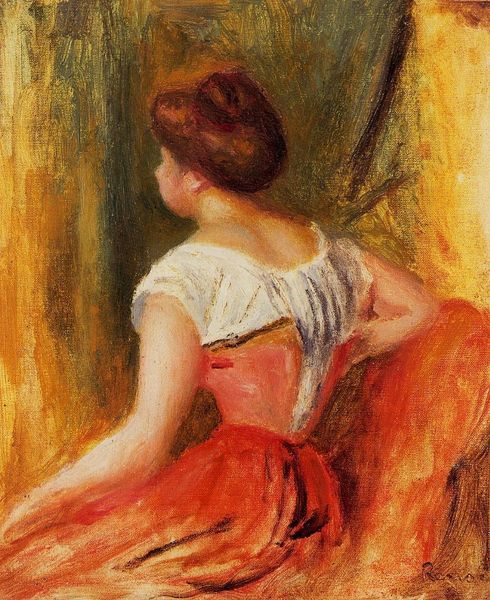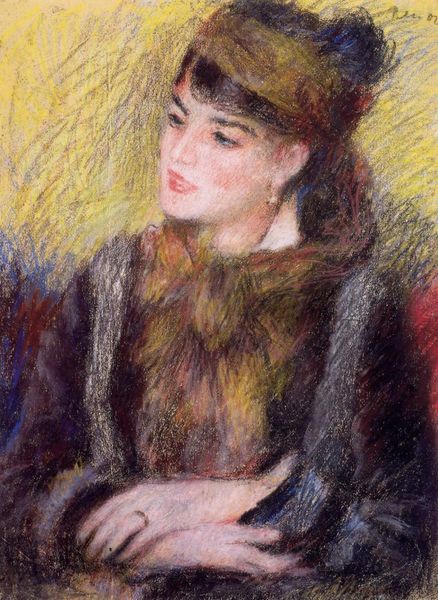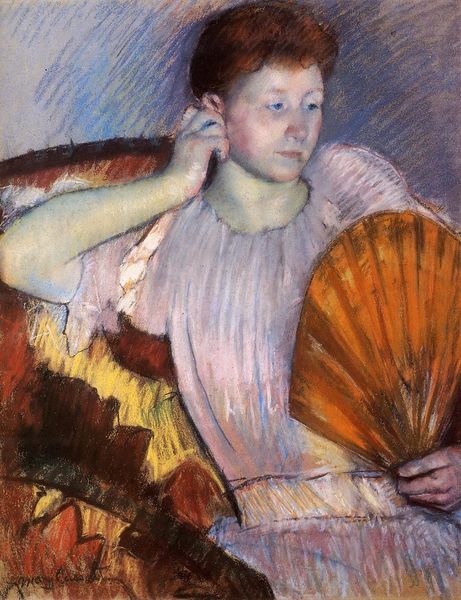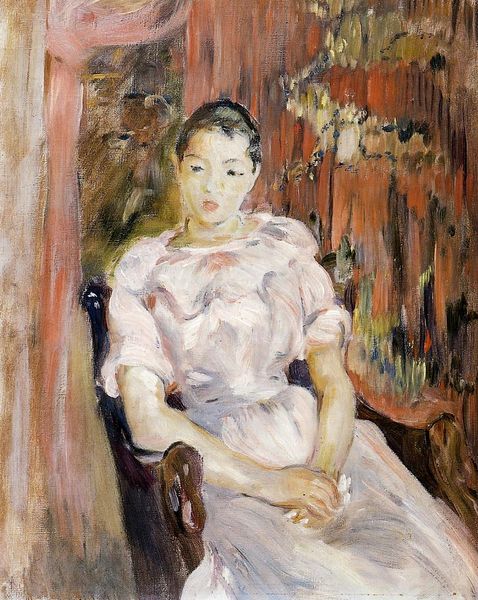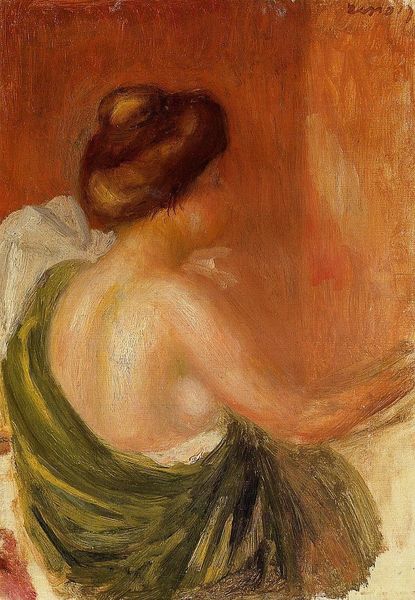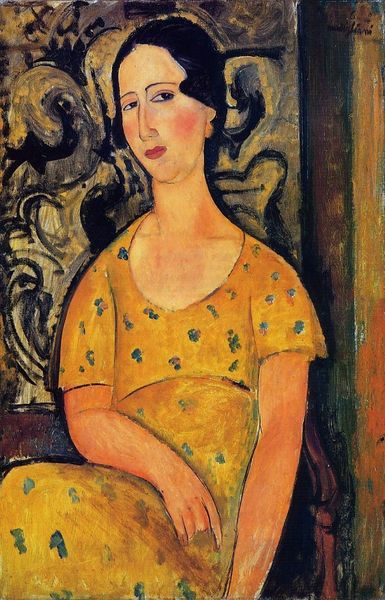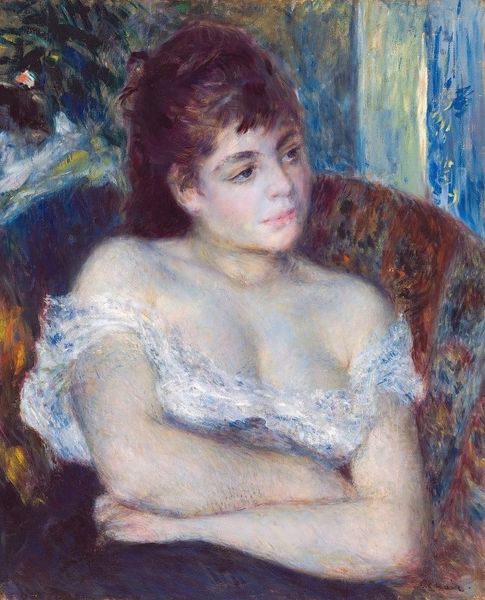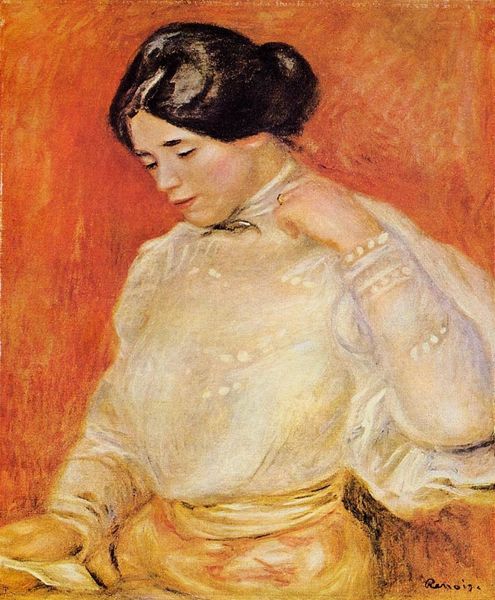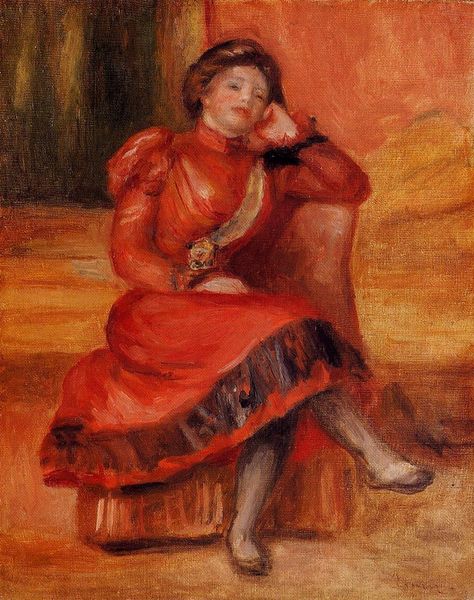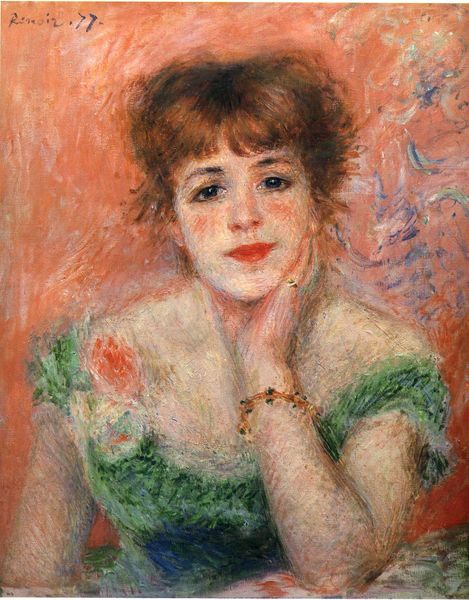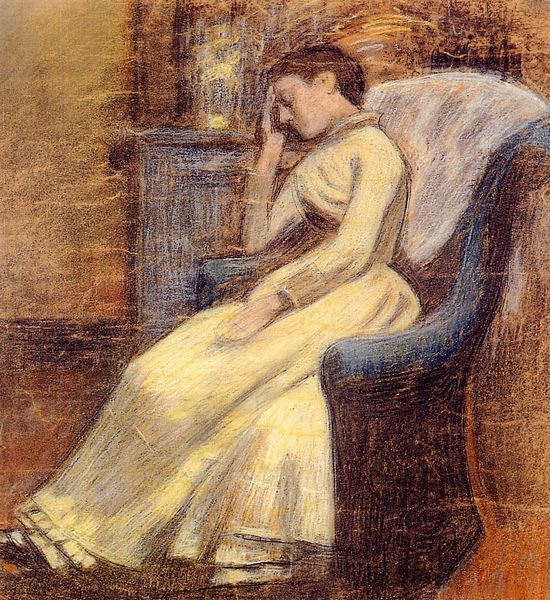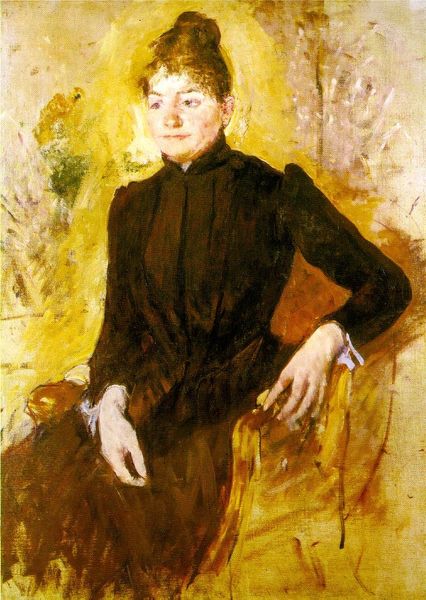
Copyright: Public domain
Editor: This is Edgar Degas's "Seated Woman" from 1895, rendered with oil paint and pastel. The first thing that strikes me is the texture. It's almost like looking at woven fabric, which contrasts sharply with the soft curves of the figure. What catches your eye about this piece? Curator: What grabs my attention is Degas’s unconventional use of materials here. Oil paint and pastel are combined, blurring the line between painting and drawing. The cross-hatching you noticed emphasizes the physicality of the picture plane, reminding us that this is, above all, a made object, born from a deliberate process. It makes you wonder about the labor involved, doesn't it? Editor: Absolutely. Knowing that this image involved time, labor and a lot of decisions about materials definitely makes me reconsider my assumptions about "fine art". It does not have the finish I would expect, especially of a portrait. Do you think Degas was deliberately challenging conventional notions of artistic skill? Curator: Precisely! Think about the context: late 19th century, industrial revolution. Degas, like many of his contemporaries, was keenly aware of changing modes of production. He highlights process rather than concealing it, thereby making the act of creation itself visible. Also, it might be useful to look at other pastel artists that are experimenting in a similar manner with impressionistic subject matter. Editor: So it's not just about *who* is depicted, but also *how* the depiction itself is made? Considering all this, I see "Seated Woman" less as a static portrait and more as a record of artistic labor, using very specific materials during a time of great societal shift. Curator: Exactly. The materiality becomes the message, speaking volumes about art’s place within a broader, rapidly changing world. A view to contemporary materiality opens a wide path for exploration and conversation around the creation and intention of art making. Editor: I now see Degas was way more than a society painter. Looking through the lens of materiality helps me appreciate it more. Thank you. Curator: Indeed, art invites conversations from various angles and is as interesting as you observe it.
Comments
No comments
Be the first to comment and join the conversation on the ultimate creative platform.
